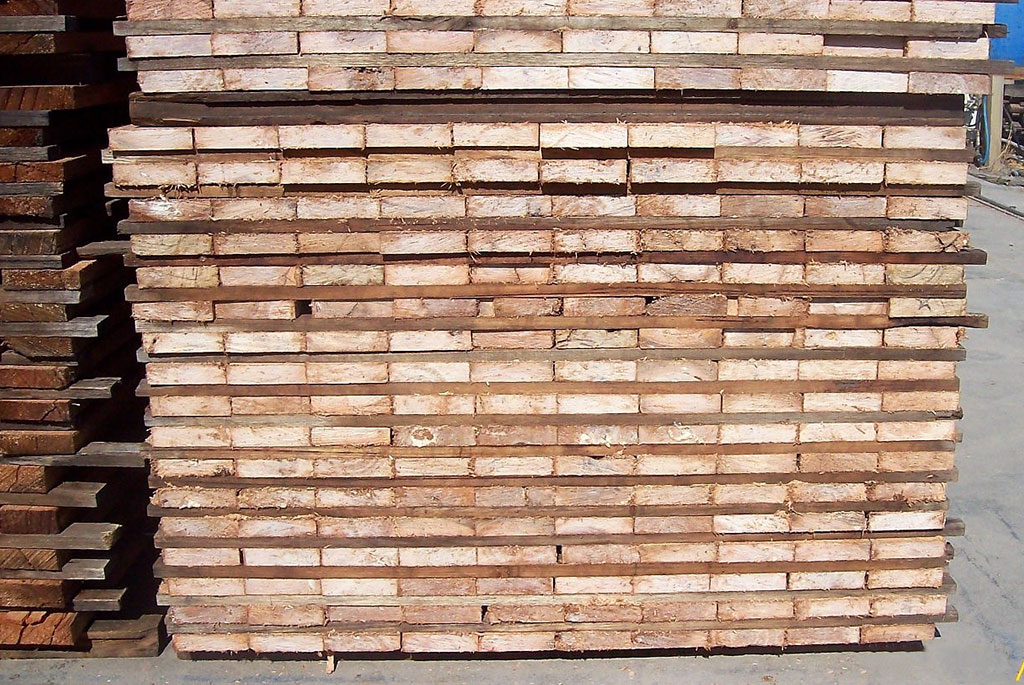The following results were derived from a Melbourne, Australia trial drying load of 12 year old flooded gum (e.grandis) timber sourced from central New South Wales plantations. Because this material is regarded as too difficult to dry” it has traditionally been sold as low value green sawn packaging material. “Solarkilns” generation four cyclic technology was used to perform the trial, most notably using a cyclic drying prescription to reduce drying stress to low levels.
To make the task even more difficult, all heartwood-approximately 30% of total sawn volume was dried in a full-cut analysis. Containing high levels of wood defect, this material that is typically chipped or wasted represented approximately 23% of the total cut. Those who have tried to dry heartwood, especially from eucalypts will understand that drying without splits and massive collapse is an almost impossible task using conventional or air seasoning drying methods.
The photo right highlights the high degree of wood defect inherent to this timber and highlights an absence of “heart-bone” (heartwood) collapse, minor checking and generally superior outcome from this now valuable cyclic dried product.

The main photo at the top of this page highlights absence of end splitting losses that often impose losses of 20-30% of the total volume dried using conventional drying. The result of this trial was less than 5% split losses due solely to log yard storage and sawing splits caused BEFORE the timber even entered the kiln.
End split losses associated with drying were less than 0.1% of total volume.
Large knot defects indicated minimal checking that could be easily filled to produce “natural look” high value flooring applications.
Quality dried flooded gum kd sawn flooring stock that was once destined for the pallet manufacture.


